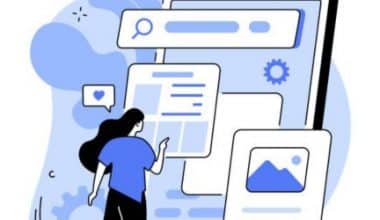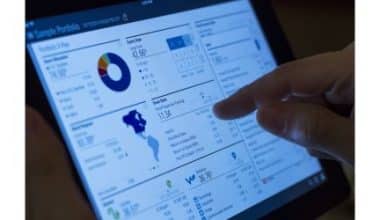Unconscious bias affects how we think and behave in the workplace, whether we are aware of it or not. When the brain processes millions of pieces of information per second, unconscious biases are mental shortcuts that help with decision-making. But when it comes to hiring and decision-making, these biases can result in biased judgments and feed prejudices, doing more harm than good for businesses. Being conscious of these prejudices is particularly crucial when hiring because they can affect how successful your future team is.
Most people imagine a purposefully biased action when they think about bias. Yet, there are implicit or unconscious biases that may influence your actions or choices without your knowledge. Unconscious biases frequently originate from incorrect, insufficient, or missing information.
Unconscious Bias
An assumption, idea, or attitude that has been learned and is held in the subconscious is referred to as unconscious bias or implicit bias. These biases are universal and are used by everyone as mental heuristics to process information more quickly. Implicit biases emerge throughout time as a result of the accumulation of life events and exposure to various stereotypes. The majority of the time, when people think about prejudice, they see a purposefully bad action. Unconscious or implicit biases, however, can have an impact on your actions or choices without your knowledge. Unconscious biases frequently stem from inadequate, incorrect, or erroneous information. These biases can dramatically affect the hiring, promotion, and recruitment processes in the workplace. Unconscious bias is a sign of being human, not a sign that you are a horrible person.
Although implicit dispositions aren’t always as well-formed as lucid thoughts, they can be deeply ingrained and have an impact on people’s emotional and logical reactions to everyday events. Prejudices and biases frequently start to emerge in young children when they start to infer things from their own experiences. Parents, educational systems, other cultural organizations, as well as well-liked media like books, movies, and television, may also subject them to stereotypes. Unconscious biases might thus develop over a long period of time while going unnoticed. Unconscious biases come in many different forms. Biases in how people view their own mental processes and reasoning skills are some of the most prevalent, such as focusing on a person’s flaws that coincide with one’s preexisting beliefs.
Unconscious Bias Examples
These biases, which include racism, ageism, and attractiveness bias, sometimes rely on preconceptions and can lead to unequal treatment when people are not considered unique individuals. Even though these biases aren’t often discussed, having them can lead to prejudice against people based on their personalities. There are also unconscious biases that stereotype people based on how they behave. We’ve outlined forms of unconscious prejudice that frequently negatively impact candidates and workers in the workplace, along with some advice on how to prevent them while making recruiting and firing decisions.
#1. Affinity Bias
Affinity bias, often referred to as “similarity prejudice,” is the propensity for people to associate with those who have similar interests, backgrounds, and experiences. When hiring teams meet someone they like and are confident will get along with the team, it is usually because they have similar interests, backgrounds, and experiences. This prevents your team from expanding and becoming more diverse.
By deliberately noting the commonalities you have with the candidate, you may distinguish between traits that might skew your evaluation and the specific abilities, experience, and distinctive qualities that would strengthen your team. This will help you avoid the bias known as affinity bias.
#2. Confirmation Bias
The propensity to look for and act upon information that supports one’s beliefs and expectations is known as confirmation bias. Or, selecting only relevant data to support a particular argument. This impairs our capacity for critical and objective thought, which can result in biased interpretations of the information we get and the failure to notice evidence that supports competing viewpoints. Despite the fact that every interview will naturally lend itself to a distinctive discourse depending on the person’s past, it’s crucial to ask standardized, skills-based questions that provide every applicant with an equal opportunity to stand out. By doing this, you can stop your team from asking too many impromptu questions that can result in confirmation bias.
#3. Attribution Bias
Despite the fact that it could seem innocent, people tend to make snap judgments and unfounded assumptions about others before fully understanding their circumstances. Due to anomalous information on a candidate’s résumé or unexpected behavior during the interview, attribution bias might lead hiring managers and recruiters to rule out a prospect from consideration for the position.
#4. Gender Bias
Sexism is another term for gender bias, which is the preference for one gender over another. Unintentionally linking various preconceptions with different genders results in this prejudice. The dynamics of relationships inside the organization and hiring procedures may be impacted by this kind of bias. In spite of the fact that they have comparable qualifications and work experience, the recruiting panel may favor male candidates over female candidates as an example of this prejudice in hiring.
#5. Ageism
Older people are more frequently impacted by ageism than younger people. Around two-thirds of workers in the 50+ age group think older workers are discriminated against. Because businesses tend to value younger people, it becomes harder for employees to change careers, find employment, or advance in their careers as their careers progress. This is true even though experience and expertise are essential traits for any successful company. Educate your team to recognize the issue of ageism and dispel some common misconceptions about workers of all ages in order to prevent ageism in the workplace.
How to Overcome Unconscious Bias
Recognizing that everyone has it and challenging their way of thinking about it is a wonderful first step. Unconscious biases that have an immediate effect on the job include the following:
- Affinity bias—The propensity to gravitate toward others who are similar to ourselves.
- The halo effect is the propensity to perceive all aspects of a person as positive just because you like them.
- Perception bias—The propensity to establish prejudices and presumptions about specific groups, which prevents one from forming valid conclusions about the individuals within these categories.
- Confirmation bias: The propensity for people to look for information that validates their preconceived notions or ideas.
Unconscious beliefs, both positive and negative, can cause structural and systemic inequality since they work outside of our conscious consciousness. We must first become aware of it if we want to reduce it. The following tactics can be useful:
You can learn that you, too, have implicit or unconscious biases by taking the Harvard Implicit Bias Association Test (IAT). Knowing them to be true enhances the likelihood that you won’t let these unconscious biases influence your behavior in the future.
Encourage constructive intergroup interaction. Interaction with members of that group helps lessen unconscious bias towards that group. Make it a point, for instance, to participate in activities with people from other backgrounds.
Counter-stereotyping. It is possible to combat gender-based stereotypes by being exposed to material that challenges longstanding preconceptions about particular groups, such as pictures of male nurses.
Implicit bias training. While raising awareness is helpful, it’s not sufficient to remove unconscious biases. The most effective training initiatives are those that help people identify their prejudices in a non-confrontational way and then guide them toward the resources they need to lessen and control them.
Test for Unconscious Bias
A test for unconscious bias quantifies instinctive or unconscious prejudice. Stereotypes, prejudice, and discrimination are built on the foundation of these biases. Project Implicit, a group of scholars from prominent universities, distributed one of the more current exams. The implicit association test (IAT), also known as the Implicit Association Scale, tries to assist people identify their biases. Bias tests seek to quantify the degree to which certain groups are associated with judgments or preconceptions. The results of these tests for bias can give a more precise picture of how people view those outside their inner group. The implicit association test (IAT) assesses the strength of relationships between ideas and judgments or stereotypes to identify a person’s implicit or subliminal biases. Project Implicit first released this test in 1998, and it has since been regularly updated and improved.
The test assesses response time to the computer images as a proxy for implicit bias. It is an online test comprising short replies to a series of words and pictures. Many people find the bias represented in their results to be unexpected and distressing, particularly prominent scholars in the field of implicit bias and those who have vowed to work for civil rights, equality, and diversity. This disclaimer is provided by the site itself: People are rumored to not always “speak their minds” and it is commonly known that they do not always “express their minds.” Scientific psychology must comprehend these differences. This website offers a technique that, compared to earlier techniques, far more effectively illustrates the conscious-unconscious divergences.
Training for Unconscious Bias
Unconscious or implicit bias training is one of the beneficial actions that businesses may take to assist employees, at every level, in identifying, comprehending, and managing hidden biases that might impede DEI projects and goals and bad decision-making. Unconscious prejudice frequently takes the form of presuming that people or particular groups are more likely to possess a given talent because of their race, or that women will leave the workforce once they have children. Three short episodes make up unconscious Bias Training. They are:
Understanding Bias:
This episode looks at the idea of workplace bias, both conscious and unconscious, and how unspoken biases can affect choices in both work and daily life. Moreover, risk factors that increase people’s susceptibility to the influence of unconscious biases are covered.
Recognizing Bias:
This episode discusses some of the most prevalent types of biases and how they can have an impact on employees. They include ageism, the halo effect, confirmation bias, affinity prejudice, height bias, attribution bias, beauty bias, and many others.
Countering Bias:
Although biases are a natural part of human nature, they can be controlled to have a less detrimental effect. This episode looks at a few methods, procedures, and tactics for overcoming biases at work. It also discusses what people can do if they notice bias or are accused of it. Each workplace choice, such as hiring, recruiting, promotions, performance reviews, and discipline, may be significantly impacted by unconscious bias. Interactions with those outside of the organization, such as clients, suppliers, business partners, and association members, can also be impacted by unconscious bias. Biases can all lead to bad decisions or discriminatory conduct because they are all based on a variety of distinct traits and presumptions.
Key Takeaway
Learning more about unconscious biases is a crucial first step. Implement programs to educate staff about unconscious prejudice, including how language can alienate candidates and coworkers. Training sessions are a great time to lay out guidelines for how future leaders should implement inclusive egalitarian and diverse policies.
What Are the 5 Unconscious Biases?
Unconscious bias: types and instances
- Gender bias. The act of stereotyping someone purely on the basis of their gender is known as gender prejudice.”
- Beauty bias. Employees who exhibit beauty bias make judgments or assumptions about others based only on their appearance. …
- Conformity prejudice
- Affinity bias
- Confirmation bias.
What Is Unconscious Bias in the Workplace?
Unconscious bias in the workplace is the propensity for people to generate judgments about coworkers without having all the facts. Stereotypes, previous conceptions, prior experiences, and instincts can all contribute to bias. When someone is ignorant of a bias, unconscious bias results.
What Is Unconscious Bias and Why Does it Occur?
Unconscious bias occurs when we make judgments or decisions without being aware of it based on our past experiences, deeply ingrained thought patterns, assumptions, or interpretations. Unconscious bias stems from a lack of professional self-awareness. So, the idea of a career shift makes you feel uneasy on a professional level.
Conclusion
To combat unconscious bias, we must acknowledge its existence, consider the nature of prejudice, ascertain how it influences our beliefs, and then resolve to put into practice effective behavioral change tactics.
Related Articles
- BEHAVIOURAL FINANCE: Meaning, Examples & Guide
- DIVERSITY TRAINING: Definition, Types, Examples, and Strategies
- RACIAL SENSITIVITY TRAINING: Best Strategies to Promote Diversity and Inclusion






